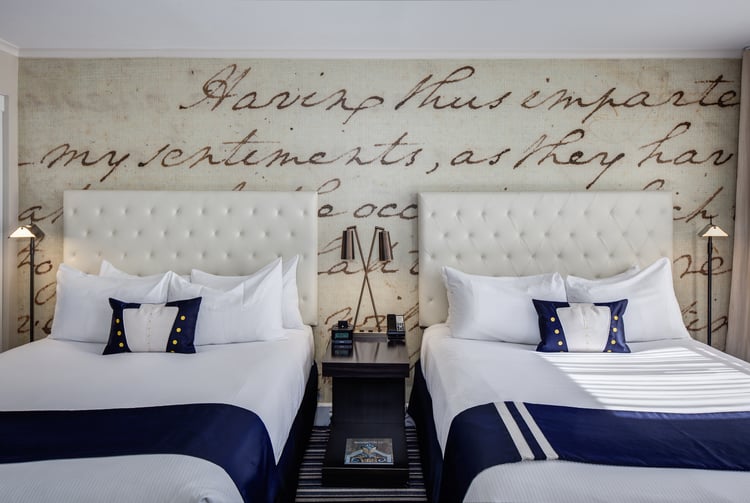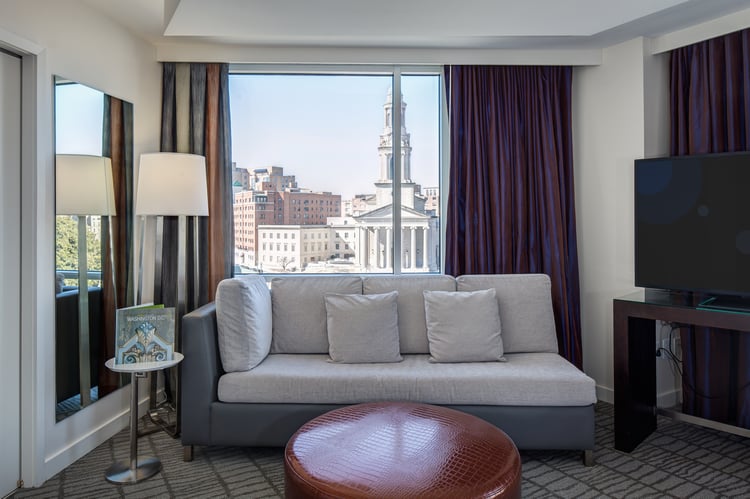Hotel design has inexorably shifted to highlighting the look and feel of the community in which the property is located. This has change the way in which projects are conceived and executed.
It’s no longer about fungible design that simply checks off a series of boxes. Rather, it’s about understanding the cultural, historical and visual cues of the individual community; then creating a visual and functional aesthetic highlighting those elements unique to that neighborhood’s character.
We spoke to Lois Goodell, principal, director of interior design, with CBT Architects and Ronnie Bray, founding partner of Bray Whaler, to see how their roles have transformed due to changing design demands.
Where do you look first to get a feel for the local environment around a new project?
According to Goodell, “It’s essential to have a sense of place as there are all sorts of associations we make, but we have to fully understand them by experiencing it ourselves. We research before we go anywhere to better understand the physical components of the neighborhood. Cities have a certain vibe and we must capture that. But we also must anticipate the future as a neighborhood could be transforming. So, we must understand what that means. We visit tons of properties and restaurants and talk to people. Designing The George, for example, we ended up with a reaction symbolizing the place and proximity to the White House by inhabiting the idea of history, but making it whimsical and surprising. The local feel is critical.”
How much does the local food and goods providers play in the overall localized design feel?
“In most projects, it’s critical the packaging from the purveyors, or materials from which products are made, feel both of that place and also make you feel as if you haven’t seen them somewhere else,” says Goodell. “This is especially true with in-room accessories such as soaps or slippers. But it’s also essential for elements such as wall coverings. For The George, we looked at The Constitution, which is written on parchment. We wanted that look and an abstract approach to the handwriting on the document. Plus, we added elements such as a replica of the button on Washington’s jacket to a pillow to highlight the historical connection.”
 Kimpton- The George - Washington DC Designed by CBT Architects Purchased By Neil Locke & Associates
Kimpton- The George - Washington DC Designed by CBT Architects Purchased By Neil Locke & Associates
How long do you research a location before starting to design?
Goodell says her team are passionate observers. “We take in quite a lot, quickly. We spend several days onsite touring neighborhoods to understand that location as well as, see what competitor’s offer, so we can make our designs distinctive.”
When it comes to purchasing those products, Bray says she relies on a stable of established vendors. “We pick them on basis of quality, reliability, schedule and price. The most important thing is reliability, then a mix between quality, price and schedule. We believe in quality products, and you have to pay for those. It is simply not worth it to go below a certain line in terms of quality. Quality is never negotiable,” Bray says.
Do you always visit a location to design for it? If you cannot visit how do you immerse yourself in the local culture?
“We often visit with the interior designer, spending considerable time to understand the project’s design goals. Our role is to do our best to get into the head of the designer, and respect what they are trying to do, then understand their design goals. I think this separates us from other purchasing firms, while still achieving owner budget,” says Bray.
“We always visit,” Goodell explains, “but we also consider ‘Instagramable’ moments as a helpful tool, especially if we are time constrained. Typically, owners understand there’s a strong business case for local visits, and they’re more willing to encourage that immersion. You cannot achieve authenticity without living it in the decisions you are making, and the space you are creating for the guest. That comes from onsite experiences.”
 Kimpton The Donovan- Washington DC Designed By CBT Architects Purchased By Bray Whaler
Kimpton The Donovan- Washington DC Designed By CBT Architects Purchased By Bray Whaler
How do you incorporate the local culture into furniture design?
“We do this several ways, sometimes through materials, especially in unique pieces because those materials represent the place or the vibe it espouses. There’s a hotel we are doing based on a local Boston area known for its craft and music instrumentation creation. When we can highlight that in the furniture, it creates the perfect scenario,” says Goodell. “For example, tables suggesting they were crafted by locals, or a reinterpretation of historic pieces with a modern twist.”
Bray says they only do that occasionally since that role typically falls to the designer, but have done so by incorporating local supply sources such as at the Sandy Lane Hotel in Barbados. More often she works with local artists such as at the Omni Dallas a city owned project that wanted to incorporate local art. “We bought all original art from local artists, an enormous logistical feat. However, there was a wonderful emotional feeling to have that kind of community reciprocity and it shows in the final product.”
Which area in the hotel is the hardest to incorporate local design?
“It’s not a hard thing as much as it’s a creative thing,” says Goodell. “At one hotel with a seafaring design, we used elements such as marking the tide for art. I think it has more to do with operations and maintenance, although bathrooms can pose a challenge more than other elements of the hotel.”
Which area of the world is your favorite to design for?
“We have been fortunate to do work in Asia, which is extremely interesting. There is a beauty and simplicity and a natural environment we crave that’s part of their everyday world,” Goodell says.
Has there been a local design project that you couldn't fit an element into that you used in a different project at another time?
“Sometime stuff just doesn’t work, no matter how much you want it to. More frequently we cannot take a whole idea because it’s typically only something that could have worked for a specific project. It must always be modified. More often it’s the germ of that ideathat may linger and work its way into something else. You cannot force one element into another project,” says Goodell.
When purchasing a local design project do you spec local designers only?
“It’s a nice idea but is challenging,” says Goodell. “We do try to find local elements, such as a bed scarf, because this typically can only be achieved through small, but meaningful doses. It’s hard to do a whole hotel that way. So, for us it is about pieces that stand out while adding a surprise element.”
Bray agrees. “Rarely are designers local to the community. We work on really big projects, and they pick a designer that fits the project they are doing. It is extremely rare that the designer is from that locality,” says Bray.
How does local design help or hinder the budget and installation?
Goodell says this typically comes down to a U.S. vs China issue. “Budget does drive that, but there is a long list to achieve locality and authenticity. There are all sorts of advances in so many industry elements, such as product development and manufacturing that can provide things local or feel as if they are local. We are delighted when we can partner with companies like Samuelson that look at a project with us and help us find cost effective solutions while strengthening the design to highlight our vision.”
In the end, creating the ultimate sense of locality is not about locally purchased products, but those products and design elements that help achieve the same goal. By partnering with vendors that can successfully team up with designers and purchasers, project goals can typically be achieved at budget and time frame required for the project.
Dive into Local Design in our March newsletter
Flip through the pages now!

